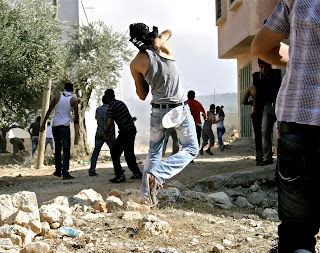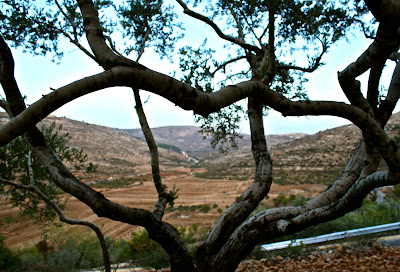The following blog post is an update of what John and I have been doing, including a few personal observations.
It has been awhile since either of us last wrote. The olive season is in the books. Hopefully next year will provide a more bountiful harvest for Palestinian families. We were told this season was about 20% as fruitful as the previous one.
The most notable occurrence since our last blog post was the recent conflict in Gaza. Hamas fired homemade/ Iranian built rockets, Israel conducted airstrikes with American made F-16 jets which dropped precision munitions on targets in Gaza in addition to rockets fired from naval vessels in the Mediterranean. The shelling lasted for just over a week before a cease-fire was brokered. The final death toll symbolizes the asymmetrical balance of power and resources between the seemingly intractable sides – 6 Israelis and 169 Palestinians killed.
We have done a lot of reading, from many different sources, and come to the conclusion that the majority of articles/reports about the conflict published by mainstream media sources are inauthentic representations of what has objectively transpired to date. Consistently the patina of objectivity is used to belie the ‘Israeli as a victim of aggression acting in self defense’ narrative. This position further justifies the Occupation and the violent actions of fundamentalist settlers. But it is up to the reader to get informed and then form his or her own opinions about the struggle.
Gas & Stones
 |
| When the gas comes you run. |
After seeing this kind back-and-forth many times, and after inhaling a great deal of tear-gas myself, I began to see the fruitlessness of that action. The question came up… what are these young men achieving besides getting out some of their Occupation-generated anger? - Which, in my opinion, is completely understandable, but really not the best way to achieve a just and peaceful end to the struggle. There must be alternatives to the stones and gas.
Habibi come to Tabib
A few days later John and I went to a public demonstration in Izbat Tabib, a very small town, near several settlements in the Qalqiliya District. Altogether it was a very different demo than any we had been to thus far.
When you turn off the main road, toward Tabib, there is a red and white sign warning Israelis that they are entering an area where Palestinians live and is accordingly very dangerous. That type of misleading language can be very powerful. Take for instance the military title of Israel’s most recent Gaza shelling – “Operation Pillar of Defense”. As John (my colleague) eruditely notes the Israeli military narrative is simultaneously part victim and part aggressor.
In Tabib locals are concerned with cultivating a very different and unifying narrative. Most Fridays a group of Israeli activists bus into the no-stoplight town to participate in an inter-cultural theatre group. They march together with Palestinians, including many children, past the red and white sign, down to the nearest main road. There they chant in Hebrew, Arabic and English. Our favorite chant and when we tend to yell the loudest is… "One, Two, Three, Four… Occu-Pation No More… Five, Six, Seven, Eight… Stop the killing, Stop the hate.”
 |
| Protestors march together in Izbat Tabib. |
After minutes of peaceful yelling a handful of soldiers circled our group of about 40 protestors. This went on for a while and they, the soldiers, seemed to have no idea what to do. They made calls and more soldiers came with several armored vehicles. The merry group of protestors then created a semi-circle and began to act out their different interpretations of the struggle and the affinity they have for each other. After an hour or so everyone went home rather satisfied, well I cannot speak for the soldiers who remained perplexed as to what had just transpired, but we were pleased with the action.
We went home feeling much different than we normally do after the usual demonstration. The rock and gas demos leave us with mixed feelings; a potpourri of anger, frustration, and powerlessness. After leaving Tabib I felt good about what had just happened; we witnessed collective action between Israelis and Palestinians at a personal level, a powerful statement in such a divided land.
John and Sam











